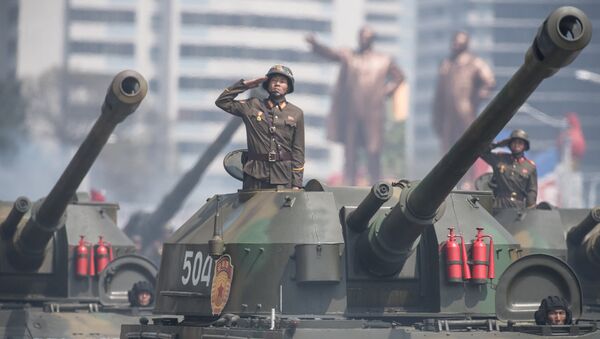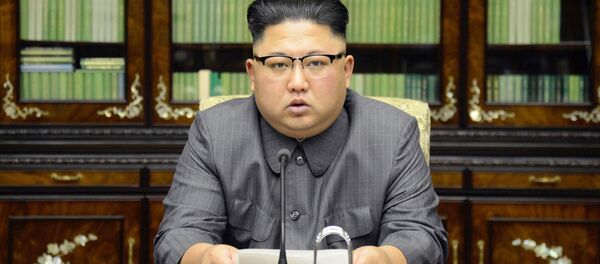For weeks observers around the world have anticipated a major weapons test by North Korea in commemoration of the national holiday. On September 29, US and South Korean intelligence sources told Seoul's Korean Broadcasting System that North Korean missiles had recently been transported from a research and development site, which they speculated might be preparations for a major weapons test.
A week later on October 6, Russian lawmaker Anton Morozov, upon returning from a visit to the DPRK with other Russian lawmakers, warned that "They are preparing for a new test of a longer-range missile. They even gave us mathematical calculations that they believe prove that their missile can hit the western coast of the United States," seeming to give credence to the idea that a test might be imminent on October 10.
However, as the Korea Times reported on Tuesday, the holiday's commemoration passed without either a ballistic missile test or a nuclear weapons test.
Suspicion of October 10 as the day of the test was not without warrant, however. Party Foundation Day has often been the occasion of choice for major unveilings by the leading WPK. Seven years ago at the 2010 celebrations, now-Supreme Leader Kim Jong-un made his public debut during what is widely believed to have been one of the largest military parades the DPRK has ever put on.
In addition, other recent North Korean holidays, such as the October 4 anniversary of the second inter-Korean summit, during which the heads of the US and DPRK sat down for official discussions, passed without major demonstrations, increasing the likelihood that October 10 would be the day.
Since Donald Trump became president of the United States in January, tensions with DPRK have steadily increased, becoming extremely heated over the summer as North Korea and the US exchanged provocative words and actions, from North Korean nuclear weapons and ICBM tests to American bombers playing chicken with the North Korean border and American and South Korean forces conducting simulated conventional and nuclear attacks against Pyongyang and other North Korean targets.
Despite Supreme Leader Kim Jong-un's hair-trigger rhetoric, North Korea maintains a "no strike" rule, claiming that its nuclear weapons and large military are purely for defensive purposes and that it will never be the initiator of hostilities. In May 2016 Kim told the WPK Congress that his government would "not use nuclear weapons first unless aggressive hostile forces use nuclear weapons to invade on our sovereignty," according to the UK Independent.
Kim recently addressed the issue of his country's nuclear weapons program to the 7th Central Committee of the Workers' Party of Korea on October 7, praising their ability to "safeguard peace" on the Korean Peninsula and in other parts of northeastern Asia.
Strangely enough, Party Foundation Day doesn't actually celebrate the foundation of the Workers' Party of Korea, but rather an early predecessor.
The North Korea bureau of the then-united Communist Party of Korea was split off in October 1945 following the dividing of Korea by the USSR and the United States after the surrender of Japan that August, which ended World War II. The bureau laid the foundation for the creation of a separate party in 1949, which became the present ruling party of North Korea, as Kim Jong-un's grandfather, Kim Il-sung, helped consolidate communist power in the North.
The remnants of the Communist Party in South Korea rejected the creation of the South Korean state and was subsequently outlawed there, eventually dissolving in 1949 following a massive anti-communist massacre on Jeju Island that killed between 14,000 and 30,000 people, one of the events leading up to the breakout of the Korean War between North Korea and its communist allies, and South Korea and its capitalist allies including the United States, in 1950.
Although hostilities ended with a ceasefire in 1953, no permanent peace treaty exists, meaning that the US and DPRK are still technically at war in 2017.





